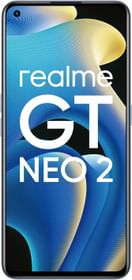Motorola Edge 30 Fusion just arrived while its competitors Realme GT Neo 3T and OnePlus 10T have been around for a few months now. Comparing each one of them, let’s see which one takes the lead in various departments such as pricing, display, design, hardware, battery camera, and features. This is gonna be an epic comparison between the three premium mid-range (and flagship) phones that you can check out.
Pricing
Below are the pricing for the three smartphones in comparision. Also, do check out the upcoming Big Billion Days 2022 from Flipkart and The Great Indian Festival from Amazon which is starting on September 23 for impressive discounts on the pricings mentioned below.
| Realme GT Neo 3T | Moto Edge 30 Fusion | OnePlus 10R | |
| 6GB+128GB | INR 29,999/- | – | – |
| 8GB+128GB | INR 31,999/- | INR 42,999/- | INR 38,999/- |
| 8GB+256GB | INR 33,999/- | – | – |
| 12GB+256GB | – | INR 42,999/- (80W)
INR 43,999/- (150W) |
Display
The trio uses AMOLED panels ranging from 6.55” to 6.7” in size which isn’t that much. The resolution is almost identical as well although Edge 30 Fusion gets a higher PPI making it a tad bit crisper plus it has a 144Hz HRR which is better than a 120Hz HRR. However, neither of the devices are using variable refresh rates so all you can do is dip down to 60Hz so don’t expect it to be as responsive as flagship variants. The touch sampling rate is a game-changer because the OnePlus 10R is twice Edge 30 Fusion with its 720Hz and as you can tell, it is snappy.
Moving on, the display quality is on par with the pricing with crisper and vibrant colors and animations. On the brightness quotient, the OnePlus 10R raises the stocks to 95 nits under direct sunlight while Edge 30 Fusion reaches 1100 nits at peak. The GT Neo 3T was able to climb to 803 nits under favorable conditions although thanks to HDR (on all three of them), a tiny portion of the screen can light up to the max advertised brightness.
| Realme GT Neo 3T | Moto Edge 30 Fusion | OnePlus 10R | |
| Display | 6.62” AMOLED 120Hz panel | 6.55” P-OLED 144Hz 1B panel | 6.7” Fluid AMOLED 120Hz 1B panel |
| Resolutions | 1080×2400 pixels (398 PPI) | 1080×2400 pixels (402 PPI) | 1080×2412 pixels (394 PPI) |
| Features | HDR10+, 1300 nits peak brightness, GG5 | HDR10+, 1100 nits peak brightness, GG5 | HDR10+, GG5 |
Design
The design element of a smartphone can be subjective. I haven’t used Motorola phones for a while but it is quite obvious that the design is a charm and yet the game goes with Realme and OnePlus.
Talking about Motorola Edge 30 Fusion, the design looks happening with not too much disturbance on the back panel. It houses a triple rear camera and a Motorola logo and that’s all. The back is matte so you can expect no fingerprints on it except the half of the camera bump which is glass. The front has a curved display which is another USP where Fusion shines.
The bezels are quite small, especially thanks to the curved display. About the buttons and other placements, you get a volume rocker and power on the right, the left is idle, the top has a microphone and a Dolby Atmos branding while the bottom has a Type-C port, speaker grille, SIM tray but no 3.5mm jack.
Talking about Realme GT Neo 3T, the phone is well-designed with its alluring color choices that elevate its looks. The back has a slight curve to it with a frosted finish and again, it doesn’t look like a fingerprint magnet. The phone is huge at 6.62” and hefty at 195grams but with premium specifications on board, it isn’t an overkill.
About the placements, we have a mic on top, a power button on the right, volume rockers on the left followed by a USB-C, speaker, mic, and a SIM card slot at the bottom.
OnePlus smartphones are usually well-designed. Although the OnePlus 10R isn’t bad in any sense, the humongous camera bump does mean it is a bit annoying for anyone who wants to go for a minimalistic view. The back has a matte finish on the right half while the left half is textured with parallel lines vertically much as Harvey Dent from DCEU.
On the placement side, we have a power button on the right, volume on the left and there’s no Alert Slider. There’s a speaker grille, SIM tray, USB-C, and mic on the bottom followed by another mic on top.
Processor and Performance
As you can tell, the Snapdragon 888+ 5G offers an edge over any of the competitors in this ring so neither Dimensity 8100 Max nor Snapdragon 870 5G competes against it without losing it although MediaTek comes a tad bit closer to SD888+.
Individually speaking, Realme GT Neo 3T’s SD870 5G SoC was able to score 1023 and 3180 points on Geekbench 5.0 in single and multi-core tests. The AnTuTu 9 scores are at 726007 falling short of SD888+ 5G by a wide margin. In any case, SD870 5G does retain its performance on the Realme device pretty impressively. However, its performance surely overtakes GT2 Pro’s performance paradigm in many ways.
Talking about Moto Edge 30 Fusion which is powered by Snapdragon 888+ 5G and backed by near-stock Android 12, the phone’s performance is incredible. It can handle everything without breaking a sweat. The flagship chipset was able to score 1158 and 3625 points on Geekbench 5.0. It is snappy, doesn’t lag, and can keep your games running smoothly even at the highest available graphics. Unlike mid-range processors, the flagship one will last for years without degrading its performance which is why you should pick the best processor first.
Next up, we have the OnePlus 10R with Dimensity 8100-Max chipset which inches closer to Snapdragon 888+ 5G although fails to beat it (of course). The chipset along with OnePlus’ OxygenOS is able to run even the most challenging games like BGMI (now banned) among others. As the UI comes paired with Oppo’s ColorOS, it gets some features such as Hyper Boost, GPA Frame Stabiliser, and SuperVOOC charging to make it a true gamer’s reward.
It’s quite obvious that Edge 30 Fusion takes the lead followed by Dimensity 8100-Max and then the Snapdragon 870 5G SoC.
| Realme GT Neo 3T | Moto Edge 30 Fusion | OnePlus 10R | |
| CPU | Snapdragon 870 5G (7nm)
Octa-core at a max 3.2Ghz Kryo 585 |
Snapdragon 888+ 5G (5nm)
Octa-core at a max 2.99Ghz Cortex-X1 |
MediaTek Dimensity 8100-Max (5 nm)
Octa-core at a max 2.85 Ghz Kryo 585 |
| GPU | Adreno 650 | Adreno 660 | Mali-G610 MC6 |
| RAM & Storage | 8GB+128GB UFS 3.1 8GB+256GB UFS 3.1 |
8GB+128GB UFS 3.1
8GB=256GB UFS 3.1 12GB+256GB UFS 3.1 12GB+512GB UFS 3.1 |
8GB+128GB UFS 3.1
8GB+256GB UFS 3.1 12GB+256GB UFS 3.1 |
| OS | Android 12-powered Realme UI 3.0 | Android 12-powered MyUX UI | Android 12-powered OxygenOS 12.1 |
Camera
Specs-wise, Moto Edge 30 Fusion has a larger front camera while the GT Neo 3T has a larger primary rear back although it isn’t just about the hardware but the software is a key factor too. Note that the trio has OIS, an ultrawide, and a macro cam at the back.
Moto Edge 30 Fusion
The phone’s primary rear cam captures detailed and crisp images. The photo quality comes up great although it tumbles as the lighting situation degrades introducing noise that gets prominent progressively although it doesn’t mean it is any worse. Then we have a 13MP snapper that captures ultrawide shots with reds, blacks, and blues looking fine while the greens could have been better. You can read more about the camera tech here. The front cam is huge and captures decent shots during the day with a good FOV.
OnePlus 10R
The 50 MP primary camera takes precise photos during day and night so that’s appealing for the photo-goers. You can expect punchy colors in shots and especially if you pair it up with google Camera, the output is literally out of this world. The phone manages to capture exposure just the right way keeping the lowlight shots in perfect conditions although don’t expect it to outrun bigwigs like Samsung S22.
A smaller 8MP snapper takes ultrawide shots which have a decent dynamic color although you will feel a difference between shots captured from UW and primary cam. The macro cam on the trio is an auxiliary as usual and allows average shots although don’t expect too much from a 2MP snapper. Finally, we have a 16MP selfie cam that churns out detailed yet a bit overexposed shots, however, OnePlus could’ve done better.
Realme GT Neo 3T
Moving on, we have Realme GT Neo 3T that brings a 64+8+2MP combo along with 16MP front snapper. The main camera is capable of taking some good-looking photos in daylight with enough details retained and excellent colour vibrancy. It uses artificial sharpening which becomes apparent in some cases and gets worse during indoor shots. You can snag a photo at 2x optical zoom with relatively no quality loss, however, the shots are software noisier as you go at 2x and more.
There’s no varied difference between the OnePlus 10R and Neo 3T’s ultrawide snapper as both are 8MP and thus, the deliverables are on par. The shots have pale colors with a limited dynamic range, however, it does manage to snag decent shots. The front camera, as said, is okay for selfies and duofies although it has limitations and especially w.r.t. The lighting conditions.
| Realme GT Neo 3T | Moto Edge 30 Fusion | OnePlus 10R | |
|---|---|---|---|
| Front | 16MP f/2.5 26mm HDR at 1080p@30fps | 32MP f/2.5 HDR at 4K@30fps | 16MP f/2.4 26mm HDR at 1080p@30fps |
| Rear | 64MP f/1.8 25mm PDAF Primary Cam | 50MP f/1.8 multi-directional PDAF and OIS Primary Cam | 50MP f/1.8 PDAF and OIS Primary Cam |
| 8MP f/2.3 119° Ultrawide Cam | 13MP f/2.3 120° Ultrawide Cam | 8MP f/2.2 120° Ultrawide Cam | |
| 2MP f/2.2 Macro Cam | – | 2MP f/2.4 Macro Cam |
Battery
On the battery front, both Realme GT Neo 3T and OnePlus 10R are equipped with a 5,000 Li-Po mAh battery backed by an 80W fast charging tech while Moto Edge 30 Fusion takes on a slightly smaller 4,400mAh battery with 68W fast charging tech. Note that the OnePlus 10R also has a 150W fast charging tech in India available with no difference from the 80W variant except for the blazing fast charging tech.
The batteries on the trio are amazing although it’s quite clear that Realme and OnePlus take the lead here with an additional 600mAh of battery capacity that should get you an hour of hardcore usage. Overall, all these phones will last for a day with ease and even take you to the next day except probably the Edge 30 Fusion if you are a truly hardcore user.
On the charging speed front, again the Realme GT Neo 3T and OnePlus 10R take the lead with 80W charging speeds capable of juicing up the battery from 0 to 100% in 40 minutes while Edge 30 Fusion’s 68W tech takes 25 minutes to charge a 4,400mAh battery. In fact, the OnePlus 10R has a 150W variant too which gets you to 100% in less than 17 minutes.
| Realme GT Neo 3T | Moto Edge 30 Fusion | OnePlus 10R | |
| Battery | Li-Po 5000 mAh | Li-Po 4,400 mAh | Li-Po 5000 mAh (standard variant)
Li-Po 4,500 mAh (150W variant) |
| Wired Charging | 80W | 68W | 80W (standard variant)
150W (150W variant) |
Connectivity and Features
The trio has a stereo speaker setup which is a great picture for audiophiles perhaps except for the fact that none has a 3.5mm headphone. You will get dual-band Wi-Fi 6 on both GT Neo 3T and 10R along with Bluetooth v5.2 LE and A2DP. However, the Edge 30 Fusion gets a tri-band Wi-Fi 6e onboard. There’s dual-band GPS where the Realme’s phone has the most number of GPS systems.
There’s NFC on the trip and USB-C 2.0 on all except Type-C 3.1 on the Edge 30 Fusion given the fact that it is a flagship phone. Additionally, it has ready for 3.5 support as well. About the SIM capabilities, we have dual SIM capabilities with 5G support on all the devices including both SA and NSA 5G tech.
Realme GT Neo 3T vs Moto Edge 30 Fusion Vs OnePlus 10R: Verdict
Now that we covered every aspect of the trio, it’s time to point out the possible winner. Although it is subjective given the fact that everyone has a different use case and experience, the verdict might not be the one you are looking for.
When it comes to performance, Moto Edge 30 Fusion takes a lead also because of the clear UI it uses plus the added promise of an upgrade for years. Design-wise, the Realme GT Neo 3T looks too enticing whereas the OnePlus 10R may not be able to impress everybody given the ginormous camera bump.
On the account of battery life, both Realme and OnePlus are offering excellent battery life and charging tech with 10R taking it to 150W as well. However, the faster a battery life, the faster it utilizes lifecycles, and the sooner it goes near a replacement. We don’t have many complaints over the display since all are using AMOLED panels. The camera tech is another aspect that is subjective. However, if it gets Google Camera support, you can still churn out the best shots on any of these three smartphones.
You can read the reviews of Realme GT Neo 3T, OnePlus 10R and Motorola Edge 30 Fusion respectively for a better understanding.








































